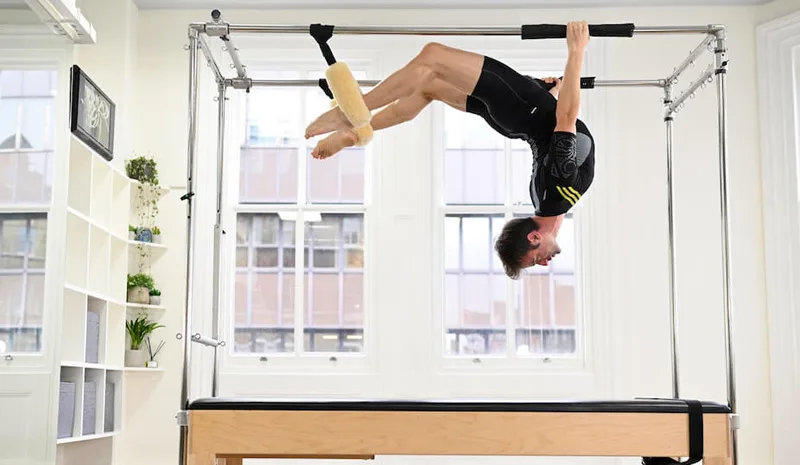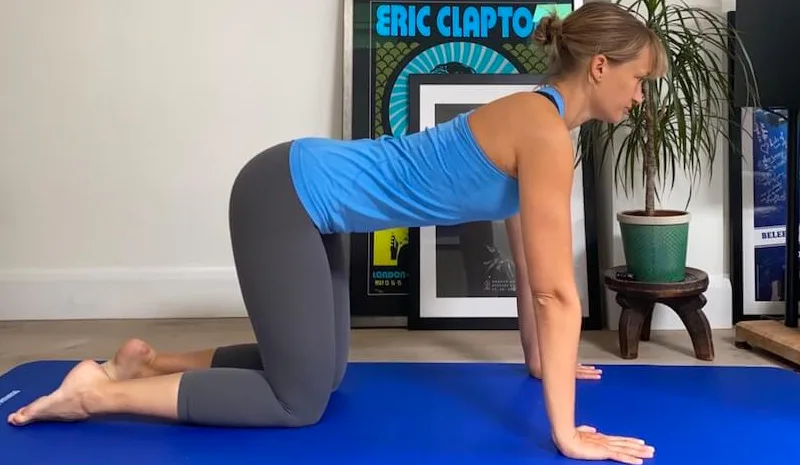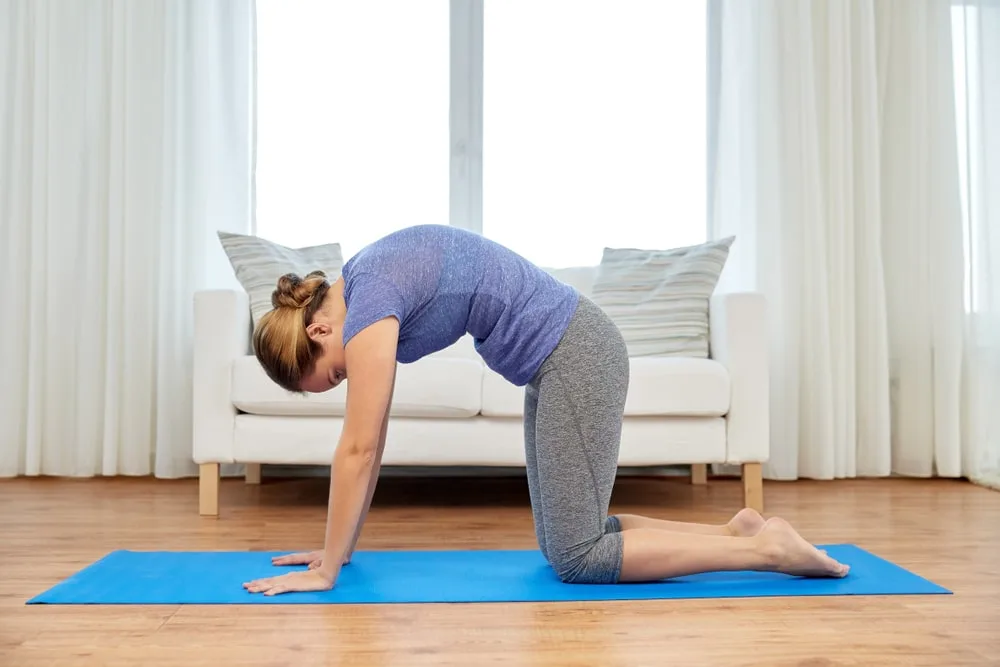Do you have back pain which will not go away? Do you always get back pain when you are doing abs exercises? Have you got a disc prolapse, seen a consultant and had no idea what they were talking about? Or maybe you simply want to learn more about your spine? How does Pilates relate to the spine?
At Complete Pilates we see thousands of people with problems just like these.
Our biggest advice is education is key.
The more you understand about your body, the more likely you will be to fix it! Remember, we can give you the skills but we cannot come home with you!
The facts
The spine is made up of 3 natural curves which together form an ‘S’ shape. The muscles in your core, around your back, diaphragm and pelvic floor, help maintain and support these curves. This means weight and force is safely and evenly distributed throughout.
There are 33 bones, or vertebrae, in total in your spine but only the top 25 move as your sacrum and coccyx are fused. Each vertebrae has unique features which help them perform their function.
The Anatomy of the spine
The neck anatomy (cervical spine)
Its main function is to support the weight of the head. It has the most movement because of the top two vertebrae which connect to the skull.
The first vertebrae (C1) is a ring shape which connects directly to the skull and allows you to nod. It is also called the atlas. The second (C2) is a peg shape and has a projection which allows the atlas to pivot on it, enabling you to shake your head. It is also called the axis.
When you are moving around, your neck should always be free to move rather than being fixed. It was designed for mobility so that we could spot danger and run away!
The mid back anatomy (thoracic spine)
Its main function is to hold the rib cage and protect the heart and lungs. It is specialised for stability and keeping your body upright. The discs in this area are narrower.
Your thoracic spine curves outwards, so when you are lying on your back you will naturally feel more pressure here. This means that it does not extend very much!
The lower back anatomy (lumbar spine)
This part of the spine is designed for weight-bearing and taking heavy load. To help with this the bones are much larger to help absorb the stresses of lifting or carrying large objects. The spinal canal is also larger to allow for more space for the nerves to pass.
The most typical thing we see is that people try to force it down to the floor when they are doing abdominal work or in a bridge. Remember, it has an inwards curve.
When you are doing abdominal work, try not to imprint your spine, but instead maintain its natural curves. This means that you are keeping the same shape you have in standing so will naturally get stronger more functionally!
The discs
Each bone in your spine is separated and cushioned by a disc which help with shock absorption. These discs get larger as you move down the spine from the neck.
Each disc has an outer ring called the annulus. This has crisscrossing fibres which make it really strong. Inside is the nucleus which is a filled with gel and held in place by the annulus.
With age, our discs naturally become flatter, with less fluid. This is one of the reasons we get shorter. The main reason for the speed of this happening is genetics.
The spinal cord
The spinal cord connects the entire nervous system from the brain to the rest of the body and acts like a motorway, sending information back and forth. The brain sends movement signals down and the soft tissue sends sensory information back.
To help protect us we have automatic responses which are called spinal reflexes. This means that you do not have to think about something before you do it. For example, when you touch something very hot, you immediately pull away.
This is an automatic reaction which is us reacting without sending messages back up to the brain.
The spinal cord passes through a hollow column from your neck to your sacrum called the spinal canal. These nerves leave the spine at each level through channels called the intervertebral foreman. Two nerves exit at each level, one to the right and one to the left.
At your lowest thoracic, or highest lumbar vertebrae, the spinal cord splits into the cauda equina. Imagine this like the hairs on a horses tail.
The nerves
There are 31 pairs of spinal nerves which come off the spinal cord.
Your nerves are like telephone lines which carry messages around your body and help control your movement and sensation.
Each spinal nerve has two roots. One of these carries all the movement signals and the other carries sensory signals. These fuse together to form the nerve and come out of the spinal canal at the intervertebral foramen.
Each nerve supplies a specific area of the body with sensation which is called a dermatome. Medical professionals can use this to identify a problem with a specific area in your the spine.
Why is the spine important?
Without your spine, you would not be able to keep your body upright or even stand up!
It gives you support and structure to allow you to move freely. It helps protect your spinal cord which sends messages to your muscles telling them to work.
Lower back pain is also one of the biggest reasons for people missing work. By taking care of your spine, noticing any problems quickly, and investing the time to fix it is key.
As with any injury, the longer you leave it the harder it is to fix.
Pilates and the spine FAQs
Is Pilates good for the spine?
Pilates is a great way to work on spinal movements. The spine is made up of discs and vertebrae surrounded in a case filled with spinal fluid. Spinal mobility exercise, in particular twisting exercises, help to keep the spinal fluid lubricating the spinal discs which keeps them plump and healthy. Pilates spinal exercises also help to keep the joints of the spine mobile, and the muscles attaching to the spine flexible. Pilates exercises also help to work the muscles that give support and stability to the spine, which help to protect from strain and injury.
What are the 5 actions of the spine Pilates?
The 5 actions of the spine in Pilates refers to the different directions that the spine can move in. Flexion is the forward bending motion – such as when you bend down to pick something up off the floor. Extension is the backward bending movement, such as when you look up to the sky. Side flexion refers to a side bending movement, such as when you lean to pick up a bag from the floor. Rotation is the twisting movement you need, for example, if you turn to look behind you. The fifth movement is called circumduction and refers to movement in a circle. This can be a combination of all the movements.
Can Pilates realign your spine?
Pilates is a great way of getting your spine moving, particularly through its focus on exercises that concentrate on sequential movement of the spine. It also has a great variety of exercises that move the spine in all directions and in combinations of different directions. Pilates can help you to become aware of your posture and to be able to alter your posture where appropriate. This is especially helpful where altered postures or movement patterns appear to be contributing to pain. However, Pilates cannot alter structural alignment issues in the spine. If you have a deviation away from “ideal” posture that is related to changes in muscle strength, tightness in your muscles, or stiff sections of the spine, Pilates can help you to work on these.
What does ‘neutral spine’ mean?
The ‘neutral’ spine position refers to the natural resting position of the spine. The natural resting position of the spine is not straight up and down. If you look a the spine sideways on, it is shaped like an elongated ‘S’. The lower back slightly curves in and the upper back slightly curves outwards, with the back of the neck curving in at the top of the ‘S’. The neutral spine refers particularly to the gentle curve of the lower back, which is called the ‘lordosis’.
What are the best Pilates back exercises?
Pilates has a great many exercises that mobilise the spine in all directions. However, if you are looking specifically for exercises to strengthen your back, look no further than our dedicated article on the 8 best back exercises.
All the Pilates equipment are great for working the strength and mobility of the spine, depending on the exercises that are used. However, the ladder barrel and spine corrector are particularly useful, due to their curved surfaces, for working on spinal mobility.
Top tips for a healthy spine
To help keep your spine healthy, try the following things:
- Rotate please link to book openings exercise video page to each direction regularly. You can do this in your office chair!
- Try and sleep well to help recovery
- Stay active with a variety of activity, not just heavy impact classes or heavy weights
- Maintain a healthy weight
- Stay hydrated
- Work smart: organise your space and move regularly
- Pay attention to warning signs and seek advice please load up a contact us form quickly.
Pilates exercises for a healthy spine
Seated spinal rotation
Book openings
Cat-Cow
Thread the Needle
Conclusion
The spine is an amazing structure of the body. It houses the information superhighway of the spinal cord, transporting millions of tiny messages from the body to the brain and vice versa. Not only this, but it is an amazing piece of biomechanical engineering. The spine is perfectly designed to hold up the rest of the skeleton, absorb shock as we move around and bend in all directions to allow us to navigate and interact with our environment. Spines absolutely love movement to keep them healthy, and Pilates is brilliantly suited to giving them the movement they need!
Are you experiencing spine-related issues? Or perhaps you just feel inspired to get moving?! If you would like any more advice and guidance around Pilates for your spine, please do not hesitate to get in touch with us. Why not come and try a studio class of Pilates in Chelsea or 1-2-1 session with Complete Pilates in London? You can also visit us at our Pilates studio in North London or our Pilates studio near Shoreditch.
Education is key:
These blogs are designed to give information to everyone, however, it is important to remember that everyone is different! If you have not seen one of our therapists and have any questions about injuries, what you have read or whether this may be useful to you, please just ask. We are more than happy to help anyone and point you in the right direction. Our biggest belief is that education is key. The more you understand about your injury, illness and movement, the more you are likely to improve.





